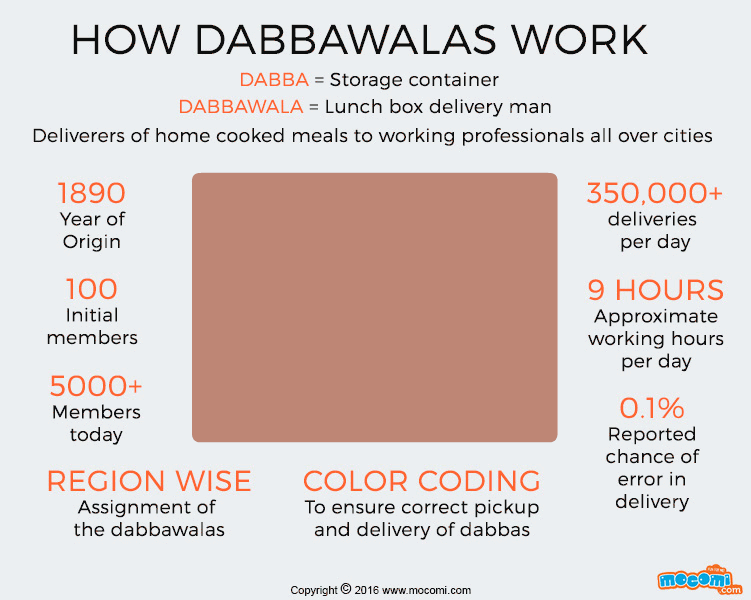The deliverers of home cooked meals to offices all over Mumbai (now common in other Indian cities as well), Dabbawalas make up one of the most efficient delivery systems in the city. A network of 5000+ professionals with one goal, to ensure timely delivery of tasty, homemade meals to their clients.
Origin of Mumbai Dabbawalas
Long back in 1890, a man named Maadeo Havaji Bachche started a lunch delivery service employing around 100 men. Over time, they formed an official association called the Mumbai Tiffin Box Suppliers’ Association, otherwise known as “The Dabbawalas”. The term “Dabbawala” or “Dabbawallah” can be translated to “tiffin box delivery man”. Dabba, means box, although when it comes to dabbawalas, it refers to the cylindrical aluminium containers they use to transport the lunchboxes.
The Dabbawala network consists of more than 5000 dabbawalas/workers, who collectively transport and deliver more than 350,000 dabbas or lunches in a day, and all of them, on time. Their work, while seemingly simple is quite challenging and involves commuting all over the dense urban landscape to deliver the lunches on time, all the while fielding train delays and traffic. Not to mention carting around heavy crates of lunch boxes and ensuring the contents do not spill. Their clients are usually middle-classed professionals who prefer home cooked meals to the restaurant fares. Which means they have to provide good service at affordable prices. This is no mean feat!
How do Mumbai’s Dabbawalas Work?
- As the work day begin (typically around 9), the Dabbawala reports for work at his appointed station.
- Next, the dabbawala picks up lunchboxes from the maker’s house. The makers keep the meals ready for pick up, neatly packed in multi-tiered lunch boxes, which can be conveniently placed in the aluminium ‘dabbas’.
- A dabbawala typically collects lunches from around 30-40 lunchboxes from all over the neighborhood.
- Around 10:30 am, the dabbawala meets other dabbawalas at the reporting station for the sorting of the dabbas based on their delivery location.
- Once sorted, the dabbas are packed into crates and assigned to individual dabbawalas.
- The dabbawala then transports his crate, either by bicycle or train, depending on the delivery location. Each crate holds at least 30 dabbas.
- Once the destination is reached, the dabbas are again split for final delivery to the assigned local dabbawalas. These dabbawalas deliver the lunches to the final recipient. This is usually around noon to 1 pm.
- Once deliveries are done, dabbawalas have their own lunch.
- Post lunch, the dabbawalas collect the now empty tiffin boxes and return them to the maker’s homes, following pretty much the same process in reverse.
Challenges faced by Dabbawalas
To ensure that the tiffin reaches the right recipients, dabbawalas have their own unique color coded system in place. The major challenges faced by the dabbawalas is ensuring timely delivery against traffic and train delays. Even so, mistakes in delivery are rare, and delays infrequent. The rate of mistakes is reported to be less than 1%. The Dabbawalas are an excellent example of teamwork and commitment to work.


